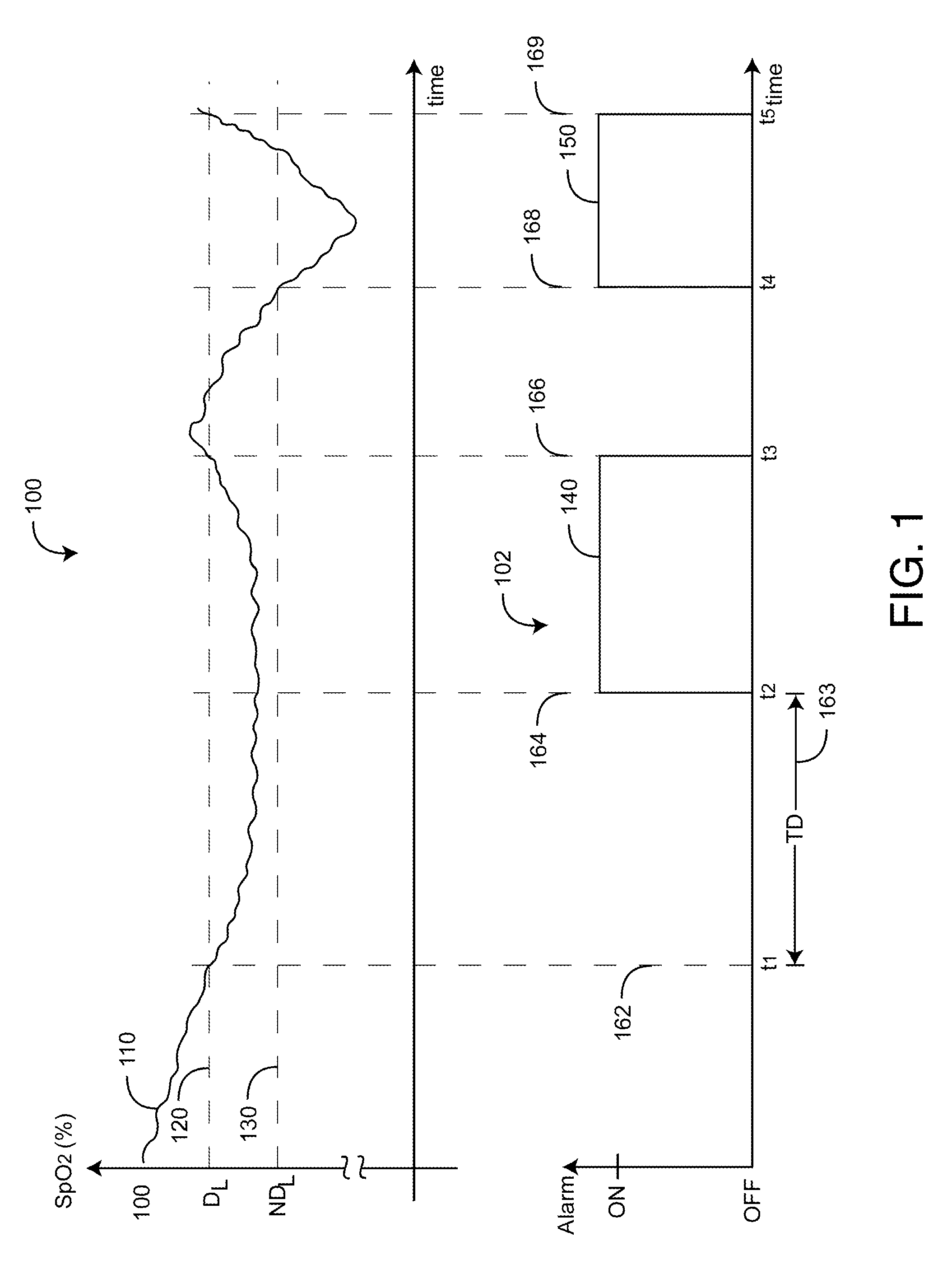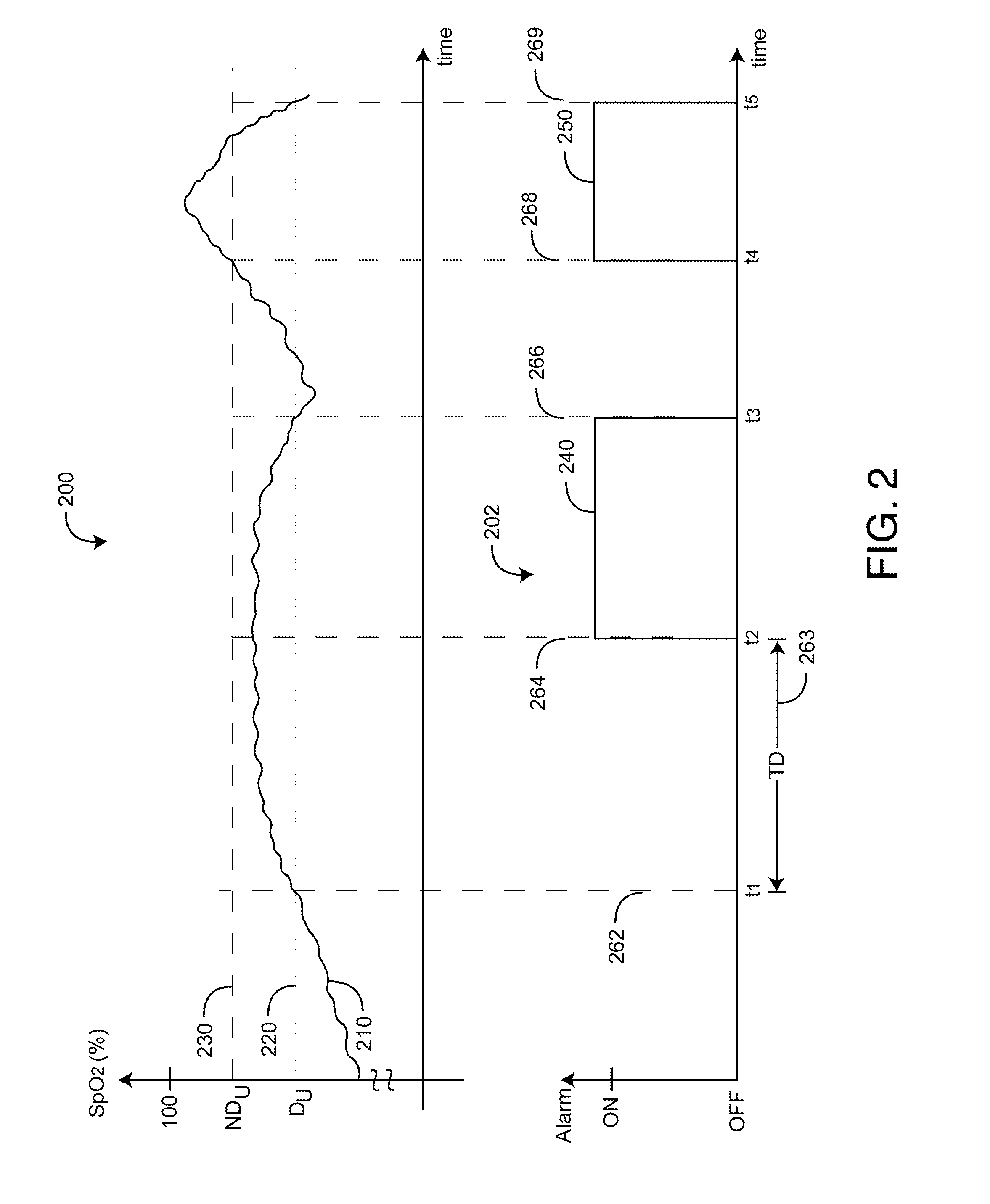Adaptive alarm system
a technology of alarm system and alarm system, applied in the field of adaptive alarm system, can solve problems such as errors in conventional pulse oximetry, and achieve the effect of reducing baseline movement and reducing the size of transients
- Summary
- Abstract
- Description
- Claims
- Application Information
AI Technical Summary
Benefits of technology
Problems solved by technology
Method used
Image
Examples
Embodiment Construction
[0028]FIGS. 4A-B illustrate an adaptive alarm system 400 embodiment having lower parameter limits L1 and L2. As shown in FIG. 4A, the adaptive alarm system 400 has parameter 401, first limit (L1) 403, second limit (L2) 405 and maximum parameter value (Max) 406 inputs and generates a corresponding alarm 412 output. The parameter 401 input is generated by a physiological parameter processor, such as a pulse oximeter or an advanced blood parameter processor described above, as examples. The adaptive alarm system 400 has an alarm generator 410, a baseline processor 420, and an adaptive threshold processor 440. The alarm generator 410 has parameter 401 and adaptive threshold (AT) 442 inputs and generates the alarm 412 output accordingly. A baseline processor 420 has the parameter 401 input and generates a parameter baseline (B) 422 output. The baseline processor 420, is described in detail with respect to FIG. 4B, below. An adaptive threshold processor 440 has parameter baseline (B) 422,...
PUM
 Login to View More
Login to View More Abstract
Description
Claims
Application Information
 Login to View More
Login to View More - R&D
- Intellectual Property
- Life Sciences
- Materials
- Tech Scout
- Unparalleled Data Quality
- Higher Quality Content
- 60% Fewer Hallucinations
Browse by: Latest US Patents, China's latest patents, Technical Efficacy Thesaurus, Application Domain, Technology Topic, Popular Technical Reports.
© 2025 PatSnap. All rights reserved.Legal|Privacy policy|Modern Slavery Act Transparency Statement|Sitemap|About US| Contact US: help@patsnap.com



